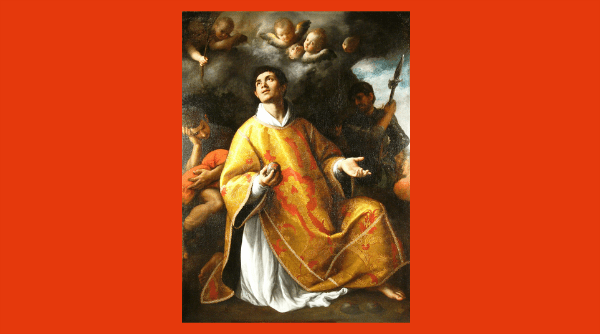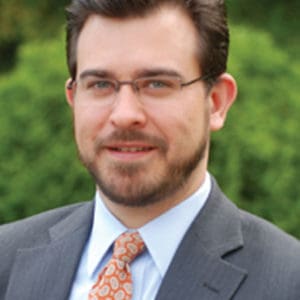The day after Christmas is the feast of St. Stephen, deacon and martyr, and an important day for us, as we have a boy named for him. Mass and Holy Communion are the perfect way to celebrate every day, but when this is not possible, the Mass prayers honoring a child’s saint are a beautiful addition to night prayers. We honor a saint’s child by lighting his baptismal candle at dinner and telling his saint’s story.
Now, Stephen was very holy and performed great miracles, defending the Faith brilliantly against learned Jews from all over, until finally they began to whisper against him, saying that he blasphemed of Moses and of God. These men stirred up the people and the elders and scribes until they waylaid Stephen and carried him bodily to the Sanhedrin to be tried, charging he said that Jesus of Nazareth had claimed He would destroy the Temple and alter the holy law of Moses. “And all those who sat there in the council fastened their eyes on him and saw his face looking like the face of an angel.”The story of St. Stephen and his martyrdom occurs in the Acts of the Apostles, chapters 6 and 7. After Pentecost, when the disciples had increased rapidly, there arose a dispute in which the Greek converts accused the Hebrew converts of being unfair to their widows and orphans. So the twelve Apostles called a council and agreed that it was not practical for them to stop preaching in order to “bestow care on tables” (one of the tasks of deacons was to serve meals as well as preach and baptize); and they therefore chose seven men full of the Holy Spirit “to put in charge of this business.” Among the seven was Stephen.
Then the High Priest asked whether the charges were true, and to answer him, Stephen told the story of the Jews. This law of Moses they loved so much, he pointed out, was not always such a clear-cut issue nor so dearly loved by their fathers as they liked to imagine.
Abraham was the father to Isaac and Isaac to Jacob and Jacob to Joseph and his eleven brothers: the twelve patriarchs whom they called their “fathers.” Did not the eleven brothers sell Joseph into slavery in Egypt? Stephen implied it was not unlike their treatment of Christ. Even so, Joseph sent for them to take refuge in Egypt when their land was afflicted by famine.
There came a time when, long after, these Jews in Egypt and their families had multiplied, and under another ruler they were not treated so well. They were forced to leave their children to die of exposure, and it was then that Moses was discovered by Pharaoh’s daughter and taken to be raised as her son.
In his fortieth year, Moses had a longing to know his brethren dwelling in Egypt; so he went out. Seeing an Egyptian cruelly abusing a Jew, he killed him; and he expected they would see that it was a sign of his role of deliverer to them. But they did not.
The next day he came upon two of the children of Israel quarreling. When he tried to make peace between them, they turned and asked, “Who made thee ruler and judge over us?” Again they did not understand.
It was God, Stephen reminded the Sanhedrin, who spoke to Moses from the burning bush and told him to be ruler and deliverer to the people who had asked, “Who made thee a ruler and a judge over us?” Moses told his people, “The Lord your God will raise up for you a prophet like myself from among your own brethren; to him you must listen.” And he meant Christ. Their rejection of Christ was a rejection of Moses.
It was Moses, said Stephen, who received from God their holy law. Despite this, the children of Israel became disobedient to the law, disowned Moses, and went so far as to carry about with them the tent of Moloch and the star of the god Rempham, worshiping them.
As for the Temple, when they were in the wilderness, they had no temple; their fathers had the tabernacle with them there. Not until after David did Solomon finally build the Temple where they worshiped daily, but they were not to assume that God was contained only by temples. The prophet Isaiah had said (as our Lord said many different ways), “Heaven is my throne and the earth is my footstool. What home will you build for me? What place can be my resting place? Was it not my hands that made all this?”
Then bitterly Stephen accused them: “Stiff-necked race, your heart and ears still uncircumcised, you are forever resisting the Holy Spirit, just as your fathers did. There was not one of the prophets they did not persecute; it was death to foretell the coming of that just man whom you in these times have betrayed and murdered; you, who received the law dictated by angels and did not keep it.” Stephen was saying that circumcision was a symbol and the dedication and loyalty to God it symbolized reached deep into the heart so that one marked by circumcision as a member of a blessed race would hear the word of God and do it.
Infuriated, they began to gnash their teeth. But Stephen was filled with the Holy Spirit and, looking to Heaven, saw there the glory of God and Jesus standing at God’s right hand. “I see heaven opening,” he said, “and the Son of Man standing at the right hand of God.” This was too much. They put their fingers in their ears to deafen this latest blasphemy and fell upon him, dragging him out of the city, “and the witnesses put down their clothes at the feet of a young man named Saul.” As they stoned Stephen, he, meanwhile, was praying, “Lord Jesus, receive my spirit!” And kneeling down, he cried aloud, “Lord, do not count this sin against them.” With that, he fell asleep in the Lord.
Saul was one of those “who gave their voices for his murder.”
Everyone is in this story: Abraham and all the prophets and Christ and His followers and His enemies and Stephen and Saul, and we are in it, too. We can look up at our Christ candle with its flame a symbol of the divine life we share, and remember that Stephen and Paul and we ourselves are all one in Christ. We are in the Church Militant. They are in the Church Triumphant. With the members of the Church Suffering in Purgatory, we are all members of the same Mystical Body, because the Head, who is Christ, and the members, who are we, are the Church. It is no play on words to say that we are part of Christ.
+
This article is adapted from a chapter in The Year and Our Children by Mary Reed Newland which is available from Sophia Institute Press.
Art for this post on St. Stephen: Cover used with permission; Painting of St. Stephen the Martyr, Fabrizio Santafede, Wikimedia Commons.
To read more about great saints like St. Stephen, click HERE.






